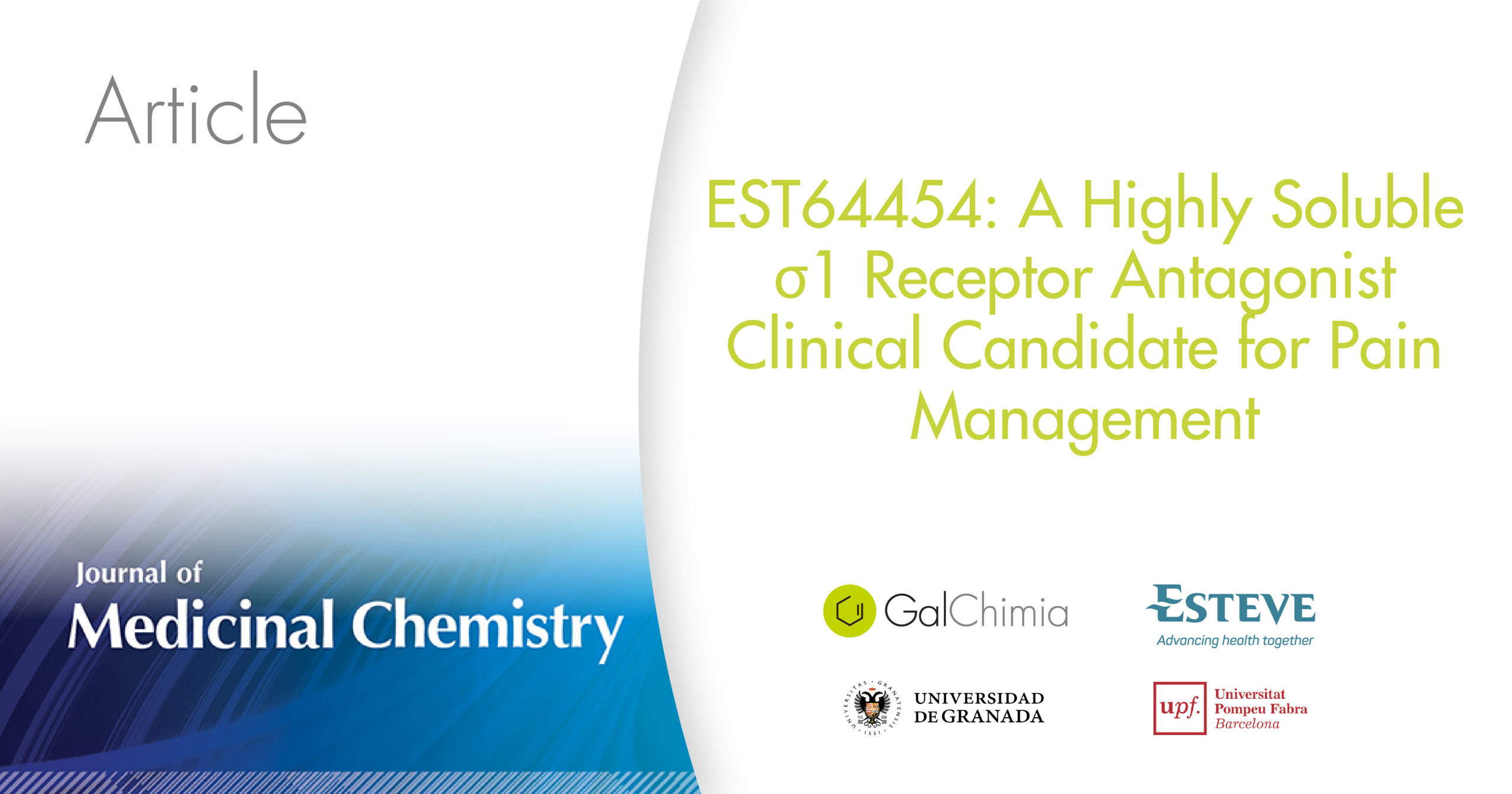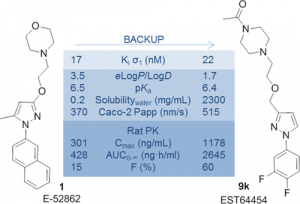EST64454: A Highly Soluble σ1 Receptor Antagonist Clinical Candidate for Pain Management
Our latest article has just been published in the Journal of Medicinal Chemistry, describing some of the work carried out as part of our long-standing collaboration with Esteve Pharmaceuticals. The article reports the development of a series of pyrazoles within a drug discovery program for the treatment of pain, with the participation also of researchers from the University Pampeu Fabra and University of Granada.
The management of pain remains a health problem. Some of the drugs available do not provide sufficient relief to patients, while opioid alternatives present concerns about long-term use and abuse. In this context emerges the need for analgesic agents with alternative mechanisms of action, a field Esteve Pharmaceuticals has been working on for years.
The target of choice in this case is sigma-1 receptor (σ1R), for which ample evidence exists supporting a role exploitable in the treatment of pain. The initial search for antagonists of σ1R led to the development of clinical candidate E-52862, which showed a promising reduction in pain scores and good clinical profile.
Simultaneously, a backup program was designed to improve some of the suboptimal properties of E-52862, in particular its solubility. Further variations in the morpholine and/or morpholine linker were explored, leading to the synthesis of over a dozen derivatives and the subsequent evaluation of structure−activity relationships. As a result, EST64454 was identified as a new candidate with very promising characteristics (good activity, low clog P, very high thermodynamic solubility, high cell permeability, high metabolic stability). Its antagonist nature was next confirmed, in addition to its in vivo efficacy.
All these results prompted the team to select compound EST64454 as a clinical candidate. As such studies require larger quantities of compound, GalChimia was further involved in the development of a new synthetic route for the large-scale production of EST64454. The new process allows the synthesis with improved efficiency, using easily available, nontoxic starting materials and reaction conditions amenable to large-scale production, while avoiding chromatographic purification throughout.
This was a very interesting project, where we provided support both in the synthesis stage as well as in the development of a process for scale up. If you share our passion for chemistry, do not hesitate to check it out!
Links of interest
- EST64454: a Highly Soluble σ1 Receptor Antagonist Clinical Candidate for Pain Management
- Pyrazole Compounds as Sigma Receptor Inhibitors, PCT Int. Appl. WO 2011147910 A1
- The fruits of our research
- Our services


